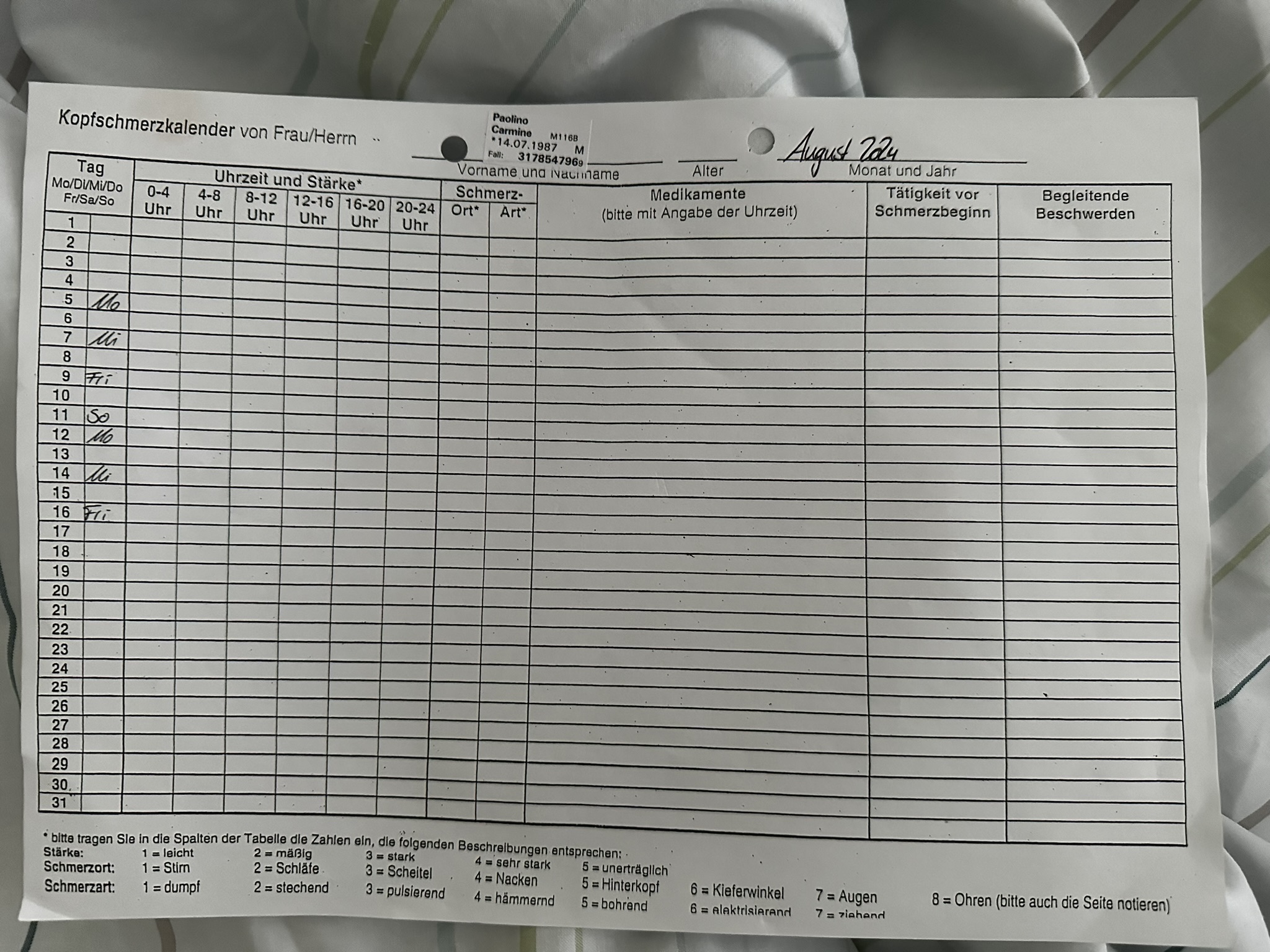
Imagine the worst pain you’ve ever experienced. Now multiply it by ten, localize it behind one eye, and repeat it up to eight times a day. Welcome to the world of cluster headaches, often called “suicide headaches” due to their intensity.
For those of you who know this pain firsthand, you understand how isolating and overwhelming it can feel. Now imagine trying to track that pain on a piece of paper with just one line per day. For all eight attacks. It was absurd.
Furthermore, the existing apps were inadequate, especially for cluster headaches. So I decided to build a better one myself. That’s how the Cluster Headache Tracker was born—right there in my hospital bed, between attacks.
Turning Pain into Purpose
This wasn’t my first experience turning adversity into innovation. While building Freshflow, a venture-backed AI-powered food waste reduction system, I faced a 1.5-month bout of cluster headaches. Two weeks of that time were spent coding from a hospital bed. Pain didn’t stop innovation—it fueled it.
The limitations of a hospital bed sharpened my focus. Each attack reminded me of the urgency of the problem I was solving—not just for myself, but for countless others. Developing the tracker required creative problem-solving under extreme constraints, but it also gave me purpose and clarity amidst the chaos.
The tracker began as a simple tool to log attacks and triggers. Even in its earliest form, it provided something profoundly valuable: the ability to make sense of overwhelming pain. This clarity gave me the strength to keep pushing forward.
Lessons in Innovation from Adversity
Reflecting on the process, several key lessons emerged:
-
Necessity Drives Innovation: The tracker was born from a clear, unmet need. When existing tools fail, creating your own can often lead to the most impactful solutions.
-
Start Small, But Start Now: The first version wasn’t perfect, but it solved the immediate problem. Starting with what you have and iterating is often the fastest path to progress.
-
Leverage Open Source for Impact: Sharing the tracker as open source amplified its reach. Community contributions improved it in ways I couldn’t have achieved alone.
-
Constraints Fuel Creativity: Coding in a hospital bed with limited time and resources forced me to prioritize simplicity and efficiency. Constraints can often be the catalyst for innovative solutions.
-
Resilience Is About Getting Up: Living with cluster headaches has taught me that setbacks are inevitable. What matters is how you respond—by turning challenges into opportunities for growth and innovation.
From Personal Need to Collective Impact
Cluster Headache Tracker isn’t just a tool—it’s a testament to the power of turning personal adversity into meaningful solutions. Creativity and problem-solving aren’t confined to moments of crisis. The lessons from this experience are universal: innovation happens when we actively seek solutions to the problems that matter most.
If you’re facing a problem with inadequate solutions, remember this: you might be the perfect person to create a better one. Your unique experience, perspective, and skills could be exactly what’s needed.
Here’s a demo of Cluster Headache Tracker:
An Invitation to Create
I invite you to:
-
Try Cluster Headache Tracker if you suffer from cluster headaches.
-
Contribute to the project on GitHub if you’re a developer interested in health tech.
-
Support this and future innovation by buying me a pizza.
Early users have reported how it’s simplified their lives and improved communication with doctors. It even made it easier for them to get oxygen therapy approved!
What will your frustration spark? Let’s create the tools we wish existed in the world.
Innovation isn’t just about grand ideas—it’s about solving the problems that matter most to us.